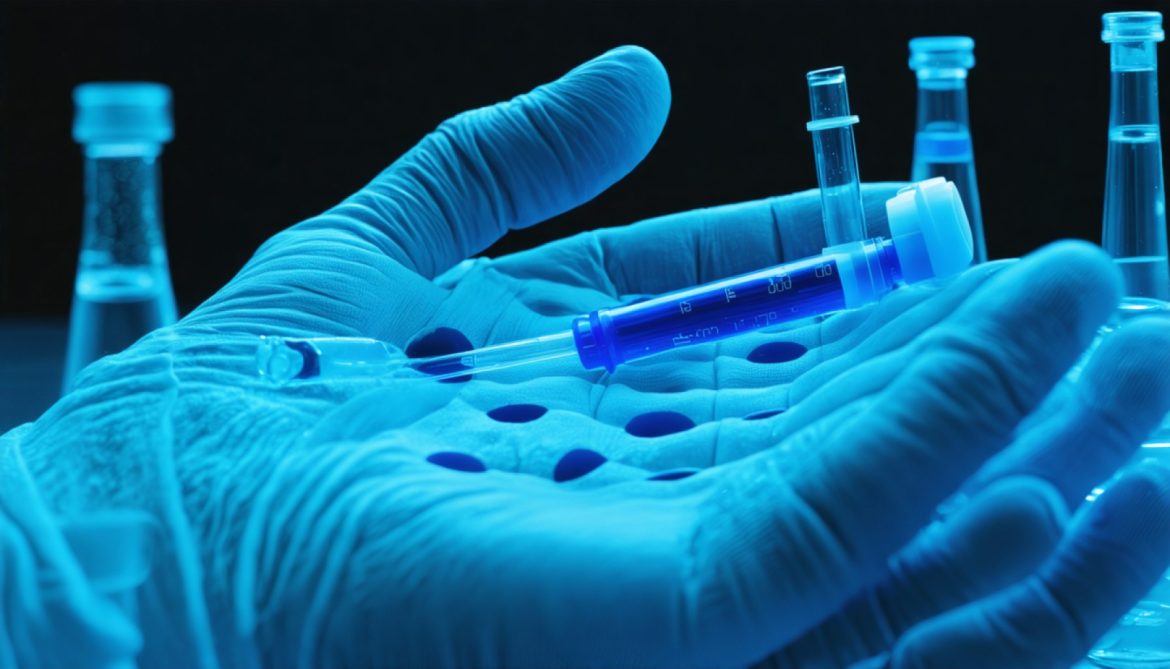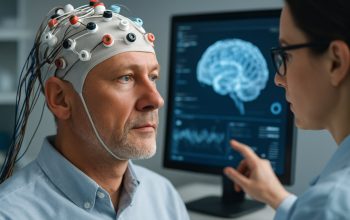- The National Security Commission on Emerging Biotechnology warns U.S. leadership in biotechnology is at risk, particularly in competition with China.
- Biotechnology’s rapid advancements impact national security, economic growth, and global power dynamics.
- The U.S. must address its reliance on foreign supply chains, particularly from China, to secure national defense and economic stability.
- Technological applications can drive innovation, and the U.S. has an opportunity to lead in setting international biotech standards.
- The Commission urges Congress to facilitate innovation by removing regulatory barriers and supporting private investment.
- A strategic six-pillar blueprint aims to thrust U.S. biotechnology into global leadership, emphasizing industry revitalization and workforce development.
- America’s biotechnological future hinges on decisive actions by Congress, guided by the Commission’s recommendations.
A tidal wave of innovation in biotechnology promises to reshape our world, and for the United States, the stakes have never been higher. The National Security Commission on Emerging Biotechnology (NSCEB) has delivered a critical report to Congress, warning that U.S. leadership in biotechnology is hanging by a thread. A new battleground has emerged, and at its heart is a race against China—a nation that has already marked biotechnology as a strategic national priority for two decades.
From groundbreaking achievements in medicine to revolutionary techniques in agriculture and beyond, biotechnology holds the power to alter industries at their core. This rapid advancement has not just implications for economic growth but entwines with the fabric of national security. The digital march of artificial intelligence has only accelerated this transformation, prompting urgent calls for action.
At the helm of this strategic assessment, Senator Todd Young highlights how America faces a biotechnology reckoning that echoes far beyond laboratories and computer screens. The technologies we champion today are the building blocks for tomorrow’s national security, economic power, and global influence. The notion that the United States might lag behind is not just a caution—it’s a potential strategic vulnerability that could redefine international power dynamics.
Central to this concern is America’s growing reliance on China for critical supply chain elements—an Achilles’ heel in national defense and economic stability. Biotechnology could pave the path to secure these vulnerabilities, offering resilience and scalability by enabling the U.S. to maintain sovereign control over critical components.
But there’s a silver lining: where challenges arise, so too do opportunities. Dr. Michelle Rozo notes that while technology itself is neutral, its application is what changes the game. For the U.S., this means carving out a leadership role in setting international standards for biotechnology development and usage.
The Commission’s report isn’t just theory—it’s a clarion call to Congress, pushing for decisive federal actions to foster innovation. This includes alluring private investments by clearing regulatory hurdles that currently stifle ingenuity. The vision is ambitious: a reinvigoration of American industries, from healthcare to manufacturing, creating a landscape where jobs are bountiful and security is uncompromised.
At the core of the Commission’s message is a strategic blueprint—six pillars designed to thrust U.S. biotechnology into the forefront of global innovation. It emphasizes prioritizing biotech at a national scale, leveraging the private sector for rapid scalability, and fostering a future-ready workforce. It’s about rallying allies and outpacing competitors.
For America to lead the biotechnological revolution, Congress must open the gates for innovation to flourish. The Commission’s robust framework and 49 recommendations are a roadmap for a future where biotechnology not only defines industries but also the nation’s standing on the world stage.
In an era where technological strides define nations, the question remains: will America seize this moment and assert its biotechnological leadership, or watch as competitors forge ahead? As the Commission delivers its call to action, the answer rests with Congress and, ultimately, the vision for an American-led future.
How Biotechnology Will Shape the Future: A New Era of Innovation and Competition
Introduction
The National Security Commission on Emerging Biotechnology (NSCEB) has raised the alarm: the United States must act swiftly to maintain its leadership in the burgeoning field of biotechnology. As biotechnology becomes increasingly important for medicine, agriculture, and national security, the stakes in the global arena are higher than ever. The competition is fierce, with China emerging as a formidable rival due to its strategic prioritization of biotechnological advancements for over two decades.
Why Biotechnology Matters
Biotechnology is reshaping industries by driving innovations that enhance productivity, improve health outcomes, and create resilient food systems. The implications for economic growth are massive, as the sector promises to create a myriad of new jobs and business opportunities. More fundamentally, biotechnology is intertwined with national security concerns, chiefly due to the reliance on foreign supply chains and the potential for bioweapons.
Key Questions and Insights
1. What’s at Stake for the U.S.?
The U.S. must not only compete in terms of innovation but also control critical supply chains, avoiding overreliance on foreign powers like China. This involves producing and securing vital biotechnological components domestically to ensure both economic stability and national security.
2. How Can the U.S. Bolster Its Biotechnology Sector?
The Commission’s report outlines six strategic pillars and offers 49 actionable recommendations, including:
– Regulatory Reform: Simplifying regulatory processes to spur innovation.
– Private Sector Engagement: Encouraging private investment by minimizing barriers and increasing incentives.
– Workforce Advancement: Developing a skilled workforce ready for the biotechnological challenges of the future.
– Global Leadership: Establishing international standards and ethical guidelines to reinforce American leadership.
3. Why is the Supply Chain Critical?
The COVID-19 pandemic exposed vulnerabilities in global supply chains, highlighting the risks of dependence on overseas production. Strengthening domestic capabilities in biotechnology will ensure the U.S. can withstand geopolitical challenges and meet national security needs robustly.
4. What Role Does AI Play?
Artificial intelligence accelerates biotechnological advancements by optimizing research processes, predicting outcomes, and improving the efficiency of production methods. AI integration is critical for maintaining a competitive edge in biotechnology.
Real-World Applications and Industry Trends
Medicine
Biotechnology is revolutionizing personalized medicine, enabling treatments tailored to individual genetic profiles. This transformation not only enhances patient outcomes but also reduces healthcare costs by targeting therapies more effectively.
Agriculture
Agricultural biotechnology is leading to the development of resilient crop varieties capable of thriving in harsh climates, thus ensuring food security and sustainability. Innovations like CRISPR gene editing are at the forefront of this agricultural revolution.
Market Forecast
The global biotechnology market is expected to continue its rapid expansion, with projected growth from $500 billion in 2021 to over $900 billion by 2026, according to Fortune Business Insights. This growth underscores the vast economic potential of the sector.
Recommendations and Quick Tips
– Focus on Education and Skill Development: Investing in STEM education is crucial to nurture the next generation of biotechnology professionals.
– Forge Public-Private Partnerships: Collaboration is key to driving innovation and scaling biotechnological solutions.
– Invest in Research and Development (R&D): Federally funded R&D can yield significant breakthroughs, strengthening the U.S.’s competitive position.
Conclusion
The U.S. stands at a crossroads: it can seize the opportunity to lead the biotechnology revolution or risk falling behind. By implementing strategic policies, fostering innovation, and securing critical supply chains, America can ensure its leadership role on the global stage.
For more information on biotechnology and its impact, explore Biotechnology Innovation Organization.



